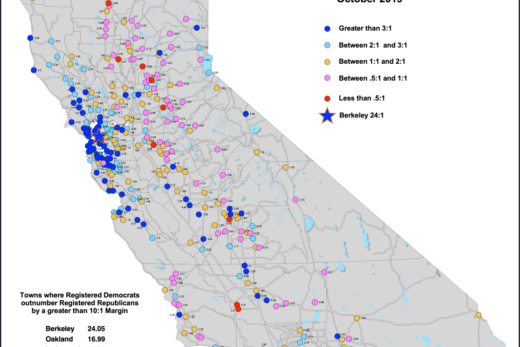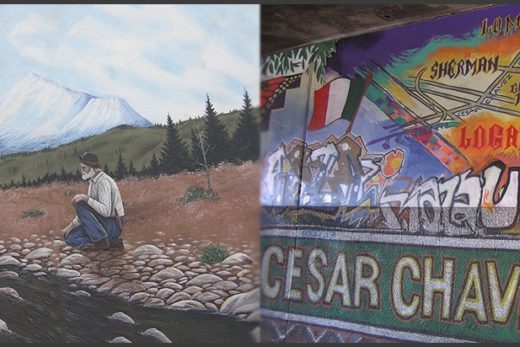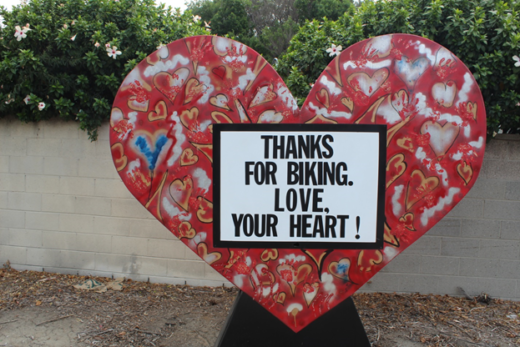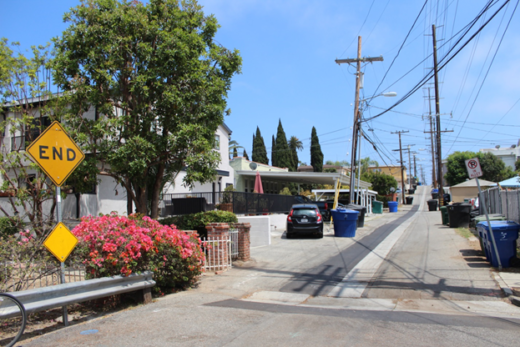People have been searching for and often finding better living and working conditions in California since Native Americans migrated and then settled here thousands of years ago. This helps explain why California was once home to some of the largest numbers of Native Americans in what is now the U.S. It also helps us understand the great invasions that swept their cultures aside and the population explosions during the 1900s that led to today’s nearly 40 million people. Who were these people, what were they escaping, what were they looking for, and why did they think they could find it in the Golden State?
We know that millions of people moved here from other states and countries to escape oppression, harsh weather, and economic hardships. We explore these great migrations in our publication. They were attracted by their perceptions of the California Dream that included new freedoms and opportunities. They came to this place where they could reevaluate their priorities and redefine what it meant to live a fulfilling life of purpose. These push and pull factors made California a magnet especially for working and middle class people looking for something better. The great migrations accelerated after WWII and peaked in subsequent decades. They brought a wealth of diverse people and cultures that settled here and quickly established their own ways of living and looking at life. And like the cultures we see today, these tumultuous movements were informed part by myth, part by reality. Now, as the state has grown, evolved, and matured, the great migrations have ceased. Except for wealthier residents mainly concentrated along the coast, the California Dream has become more elusive. Descendants of working and middle class people who built the state are being squeezed into more affordable inland regions or even out of state.
Here, we focus on people who were jumping off their factory assembly lines and other perceived treadmills and settling here during the booming 1960s and 1970s. These are people who revolted against the status quo and followed their dreams, sometimes to happiness and sometimes to ruin. Theirs are stories that helped shape California folklore and mold us into what we are today. We have established a reputation of sharing peer-reviewed scientific research on our web site that helps us understand California people and landscapes. Here is a reminder of how real-life human interest stories from the real world can be just as informative and even more interesting.
Take your time to read about how very different people viewed the Golden State as their escape plan and how they were encouraged to build their lives here. We first link you to an investigative reporter’s story featured in a fashion and style magazine. If you’re curious about what happened to that 1960s counterculture revolution with its epicenter in California, this article is for you (link below). After you’ve completed that read, we offer you another Golden State treat. Writer Gerry Morrow looks back to share life experiences and views of his world as he planned his escape from Cleveland to California. Both stories link us to the good and bad ghosts of our past, both from the same general time frame. But these diverse people settled in very different places and eventually lived very different lives that would seem to be worlds apart: the state’s cool, wet northwestern forests, versus southeastern California’s hot, dry Coachella Valley. We hope these stories begin to answer the questions we first presented about how we got here: Who were these people, what were they escaping, what were they looking for, and why did they think they could find it in the Golden State?
First, link to this story about what happened to California’s Historic Counterculture: https://www.gq.com/story/californias-vanishing-hippie-utopias?utm_source=pocket-newtab
Next, writer Gerry Morrow shares his experiences when he parts with a long family and personal history working in Cleveland’s steel mills. He escapes what would become the rust belt, blazing a new path that would lead to a new life in California. For Gerry and so many others like him, landing in the Golden State was analogous to landing in a different country. He later moved to Oakland, trying to break through Bay Area barriers as a singer/songwriter, paying the rent with blue collar jobs that included roofing. He was eventually pulled back to southern California by some other transplanted friends from Cleveland, where he worked as a roofer in the mountain town of Idyllwild. After part of a building collapsed underneath him, shattering his ankle and injuring his back, he returned to school at the age of 52. He earned his AA degree in Composition, BA in Literature, MA in Composition and Rhetoric, and started teaching. Today, Gerry still resides in Palm Desert with his partner, Judy, just a few miles from where he got off that plane five decades ago. We can see how rivers catching fire led to much more than the Clean Water Act: they became symbols of the multitude of events and factors that pushed people into California. Gerry Morrow’s story becomes one of millions of dramas that combine to make our state golden. His award-winning story was published in the spring of 2009 in California State University San Bernardino’s Pacific Review.

The Inspiration of Kitridge Taps the Zombie Man, by Gerry Morrow
Kitridge Taps. I remember him like I remember statues––he was always just there. But then, some statues do leave bigger impressions than others. Thirty-eight years have passed and I can still see him as if he were standing right in front of me. A permanent fixture in the warehouse, Taps earned the knick-name “Zombie Man.” Walking with a shuffle and his eyes wide open, never blinking, whatever he saw in his thousand-yard stare was anybody’s guess. Taps was never really there except in the physical sense, but he was always there.
No one ever saw him clock in or out, and whenever the rest of us showed up for work, he’d be standing like a pillar in the center of the big bay closest to the banding line. He always had his back to the warehouse and his eyes fixed firmly on the dust clouds raised by the heavy equipment running around in the coil yard. And he never moved until he heard the steam blast of the shift whistle.
He only ever spoke more than one word when ordering food at the canteen, other than that, he kept to himself. We loved to speculate about Taps, but nobody knew for sure how long he’d been at the mills, how old he was, or where he’d come from. But, even though we couldn’t pin any of it down, after a considerable amount of communal cogitation, we figured that at the very least his beard pre–dated World War Two. We also figured him to be from the Appalachians––basing that assumption on his lanky frame, odd facial features, and the way he dragged out the opening consonants in his favorite two words, “yep” and “nope.” In the end, we surmised that he’d most likely ridden in on the rails, standing straight up on a flatcar in the middle of a train pulled by a steam locomotive. There was even the supposition that after stepping down from the train, he stood on the banks of the Cuyahoga River and waited patiently until they built the steel mills around him.
Kitridge Taps and I were part of a nine-man team on the banding line in the warehouse at Jones & Laughlin’s 80 inch Hot Strip Mill in Cleveland, Ohio. Every day coiled steel, straight from the mill and still glowing red, slid up to us on a huge steel conveyor belt, the links recessed into deep channels cast in the concrete floor and the top running a few inches above. When we stepped onto the conveyor, we were moving down the line with the coils as we did our job––and it was a job so hot that one man from each team of three, would be “off the line” for a full hour at the end of every two hours he worked. The two men “on the line” would toss the steel “belly bands” and “eye bands” like lassoes around or through the coils, and there was a real trick to that part. Once they were cinched up, the bands were tightened and clamped with a large pneumatic apparatus appropriately called The Bander. This tool dangled weightlessly at about chest height on a thick spring suspension system mounted on an overhead rack. It was a simple but ingenious design that allowed us to position The Bander at any angle necessary to cinch up a band.
To protect our bodies from the heat of the coils we were issued silver asbestos overcoats that hung to our shins, and to protect our hands, they gave us silver asbestos mitts that were twice as thick as potholders. There were also the heavy plastic face shields that fit over a hard hat turned backward, and they kept our faces from getting baked. We had to work close to those coils, and they were big, sometimes over six feet high and six feet wide. On a cold winter night, the center hole of a big coil that had cooled down to just the right temperature out in the coil yard was a pretty good place to sleep away your hour off. In the heat of the summer, when you were off the line, you took your break as far away from those coils as you could.
The outside temperature didn’t much matter when we were on the line. Winter or summer, when we were on the line, we were slow cooking in our own sweat. Due to that, and the constant chafing of work clothes under the heavy protective gear, we all tried to psyche ourselves into oblivion as the shift dragged on, and no one knew more about psyching himself into oblivion than Zombie Man. But, there was a problem in that. You see, the statuesque Taps would always end up becoming so oblivious, he never remembered to shove his beard under his coat before getting on the conveyor. This was not a good thing, because his beard hung down to his belly and his face shield stopped just below his chin.
So, down the line would come a 15 ton coil of hot steel, spitting small chunks of slag like little shooting stars, and there would be Taps, waiting to band it with his beard sticking out. Whenever he stepped on the line like that, every man in the vicinity would wave his hands and try to yell above the din of the mill, but it was always to no avail. The time finally came when we all gave up trying to get Kit’s attention because sooner or later, we all had to admit that it can wear you out––yelling at a post.
Why he didn’t care, I just don’t know, but Taps had a whole lot of deep black burn holes in his beard, and a whole lot of deep black burn holes in the long stringy gray hair that stuck out sideways from under his hard hat. When he removed that hat and his face shield at the lunch table in the shanty, his forehead and cheeks appeared a deep steam-baked red, and coupled with the natural expression that went along with his catatonic condition, he always reminded me of a sweaty pirate shocked into a state of total confusion because the cannon he was manning just blew up in his face.
But, that wasn’t the worst of it. When he was on the line, every time an airborne chunk of red-hot slag skipped past The Bander and hit him anywhere below or to the side of the face shield, you could easily get a whiff of burning hair from 20 yards away. Now, there were a lot of wicked smells in the mills, but the smell of grease burning in Kit’s whiskers was unique. Not only did that smell lead to a lot of talk about Zombie Man trying to unconsciously commit suicide by fire, but it also led to a lot of talk about getting the hell out of that place.
I’d already tried to leave the mills twice. However, the rendezvous I chased all the way down to St. Petersburg, Florida turned out to be an ill-fated move because when I got there, she was nowhere to be found. And my dreams of making it with my guitar in New York City ended when I got in a wreck and totaled my van on the Pennsylvania Turnpike. So now, every time the beard on the Zombie Man started to smolder, all I could hear in my head was the tune California Here I Come. About a week or two after that began to happen I made the conscious decision that all I would require was airfare and a few hundred bucks in traveler’s checks and my buddies on the banding line, and the great city of Cleveland, could color me gone forever.
It didn’t take long to sock away the bucks, and I clearly recall my last walk from the warehouse to the clock-house. I was working swing shift (3-11), and the boys on the line gave me the last hour off. The locker room was empty when I showered, and just as the first of the night shift began drifting in, I left through a side door that led straight outside. It was snowing, and with my hands stuffed in the pockets of my pea coat, I was in no particular hurry. Lost in thought, I found myself stepping in cadence to the slow, rhythmic puffing of an idling locomotive somewhere far behind me. My feet crunched in the snow, and the tinny clang of distant crossing bells enhanced the mood as I walked for one last time alongside a stalled train on the tracks that led out of J&L Steel Mill.
One last time I gazed up at the giant, red-hot ingots standing like stoic monoliths on the flatcars of the B&O. One last time I listened to the snapping sound of scale as it popped from the sides of those ingots and into the rippling night air. One last time I breathed in the smell of hot steel––the stuff my father made. And even though it was a clear crisp winter night, and even though the smoke stacks of the 80-inch glowed brightly with a clean new shine put there by the full moon, I couldn’t help but think just how little charm there was, in reality, left for me down at the mills, or in Cleveland.
The year I left my hometown, it had an ugly reputation. Pollution was taken for granted in Cuyahoga County, and some of the local DJ’s had begun referring to Cleveland as the “mistake on the lake.” Others, a little bolder, called it the “armpit of the nation.” Those were the days when beaches all up and down the coast of Northern Ohio were littered with dead fish and closed, or posted with “swim at you own risk” signs due to the toxic waste spewing from the mills into the Cuyahoga River. Out on Lake Erie, the main intake for Cleveland’s water supply, known as The Three Mile Crib, had to be moved twice. First, it became The Four Mile Crib, and then The Five Mile Crib.
Finally, Canada started breathing down our necks for polluting their side of the lake, and with that––the eyes of the entire United States, and the world it seemed, were upon us. True to form, we put on a spectacular show for all interested parties when we allowed the “Big River” to catch fire. The authorities could only guess at the ignition source, but in the end, most figured that a steel worker taking a break on a trestle must have tossed a burning butt down into the swirling grease and oil floating on the surface of the water. Whatever the cause, that trestle burned up when the whole river, from one bank to the other, burst into flames. Randy Newman wrote a song about it, and the hook went like this –– Burn on big river, burn on/ burn on big river, burn on/ you know the Lord can make you tumble/ the Lord can make you turn/ the Lord can make you overfloooow/ but the Lord can’t make you burn.
To top things off, just when the average Clevelander thought our reputation couldn’t possibly get worse, Mayor Ralph Perk caught his hair on fire at the opening ceremony of a new sheet metal factory. He was leaning forward trying to cut a thin steel ribbon when he ran the business end of a blowtorch upward and into the top of his head. The whole fiasco was dutifully reported in The Cleveland Plain Dealer, which also ran a front-page picture of Perk looking like a roman candle while an assistant, coming up from behind, tried to throw a suit jacket over his head. In one fell swoop, Cleveland grabbed the singular distinction of having both a mighty river and a Mayor catch fire in the same year.
But nothing changed. Without so much as a moment’s pause, the mills continued belching out flames, noxious fumes, and a rolling black smoke that rose high enough into the sky to redden the sun at noon. And that was on a good day. When the skies were overcast, or there was an atmospheric inversion, those plumes of smoke would end up in a horizontal squat over the city, and stagnate because they could no longer rise. That was a bad day––when the pollution hovered above our heads like shifting fog, deepened to the color of cast iron, and then just got too heavy to be contained by the choking sky. On days like that, it was only a matter of time before a fine soot that looked and felt like powdered graphite drifted down into the neighborhoods surrounding the steel mills, and that greasy, coal black soot clung to and coated everything, even vertical surfaces like windshields and stop signs.

I flew out of Cleveland in mid-winter and the town was buried in snow. It was a rocky take-off because the plane was flying out of the tail end of a blizzard, and there were still some pretty high winds. When I boarded, I heard the temperature, counting the wind chill factor, was twenty below due to an artic front that extended all the way from Chicago to Buffalo. When I landed in Palm Springs, the temperature was eighty degrees and the sun was shining like I’d never seen it shine before. California was exactly one hundred degrees different in temperature, and one hundred percent different from where I’d come from.
That day, when my steel-toed work boots hit the tarmac and I saw sprawled before me the beauty of the Mojave Desert and the majesty of the San Jacinto Mountains, it was difficult to hold back my emotions. Even though I hadn’t flown in from a foreign country, I saw myself as the luckiest immigrant to ever inhale new air, on a new day, in a new land. But, I managed to remain collected, and with mid–western common sense, I refrained from letting out a yell in front of strangers. Instead, with a purpose born from the knowledge that my self-control was tenuous, I shouldered my sack, picked up my guitar, and started out for town.
As I walked away from the airport I hardly got a glance from my fellow passengers, and they all disappeared when I hiked through the gates and down the exit road. I turned off the pavement and onto a dirt path that wound through the middle of a flat desert landscape broken only by short, tough looking bushes, and round dried out tumbleweeds. I could clearly make out the sun glinting on windshields and hear cars honking on the big boulevard off ahead in the distance. The whole world, it seemed, was in front of me, and it looked and felt better than I could have imagined. It was then that the wave of gratitude I’d been holding back swept through my body with such force that it caused me to drop to one knee and clutch at a handful of desert sand. I became momentarily lost as that sand sifted through my fingers, lost in a silent prayer of gratitude to Kitridge Taps the Zombie Man for providing the inspiration that got me out of the mills in Cleveland Ohio…for the third and last time.


Whether they found the thrill of success and the California Dream or the agony of defeat and ruin, settlers and their decedents have left lasting imprints on the California we see today.








